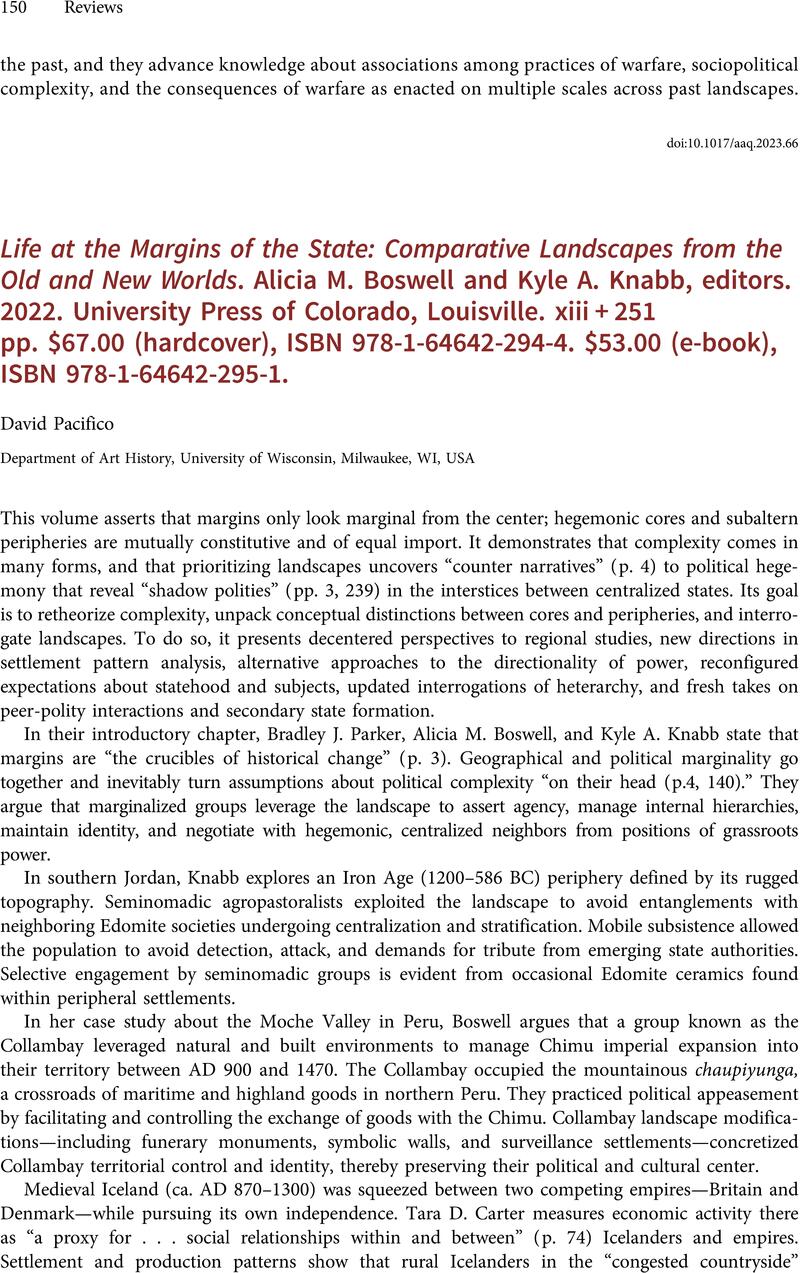No CrossRef data available.
Article contents
Life at the Margins of the State: Comparative Landscapes from the Old and New Worlds. Alicia M. Boswell and Kyle A. Knabb, editors. 2022. University Press of Colorado, Louisville. xiii + 251 pp. $67.00 (hardcover), ISBN 978-1-64642-294-4. $53.00 (e-book), ISBN 978-1-64642-295-1.
Review products
Life at the Margins of the State: Comparative Landscapes from the Old and New Worlds. Alicia M. Boswell and Kyle A. Knabb, editors. 2022. University Press of Colorado, Louisville. xiii + 251 pp. $67.00 (hardcover), ISBN 978-1-64642-294-4. $53.00 (e-book), ISBN 978-1-64642-295-1.
Published online by Cambridge University Press: 09 October 2023
Abstract
An abstract is not available for this content so a preview has been provided. Please use the Get access link above for information on how to access this content.

- Type
- Review
- Information
- Copyright
- Copyright © The Author(s), 2023. Published by Cambridge University Press on behalf of the Society for American Archaeology


